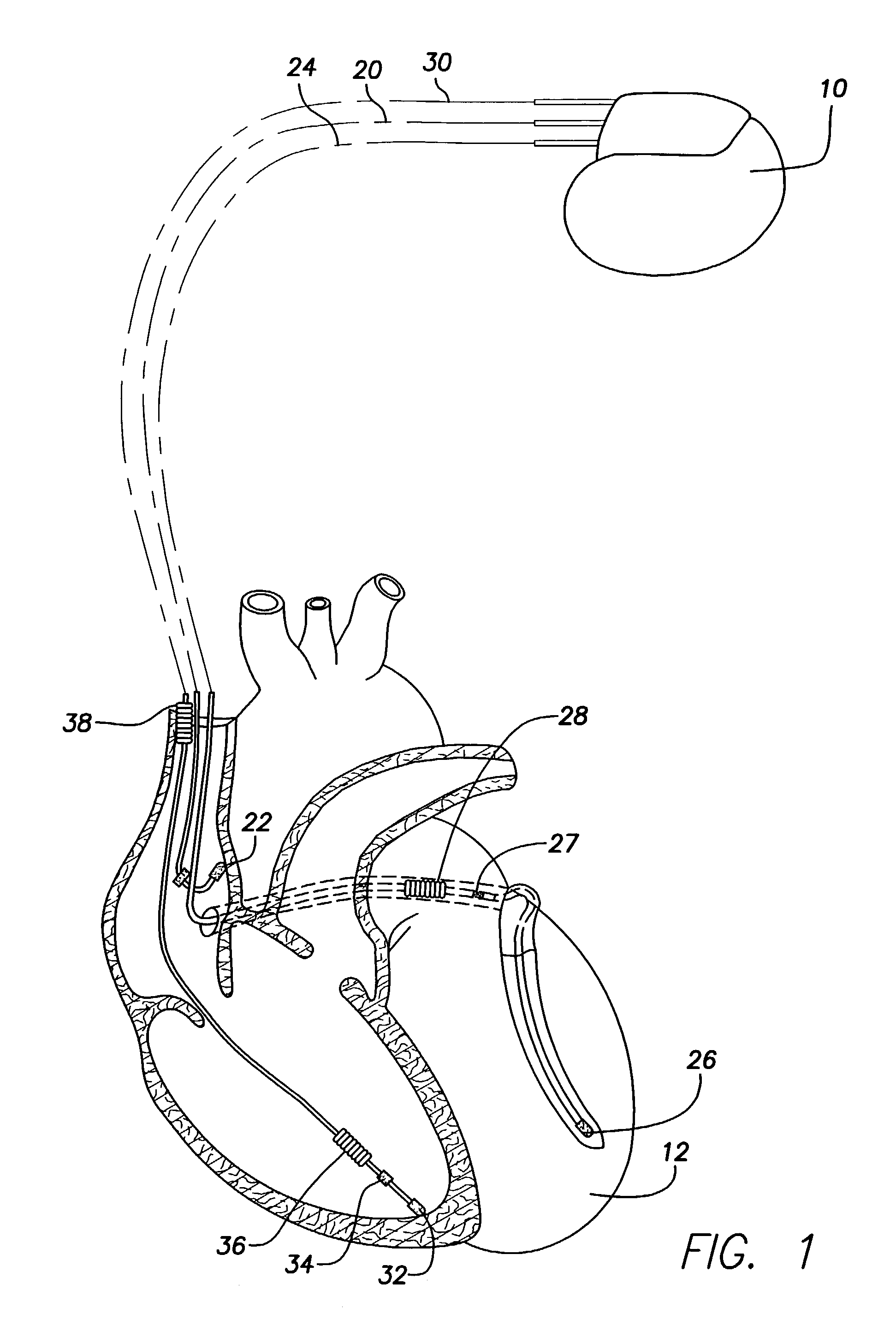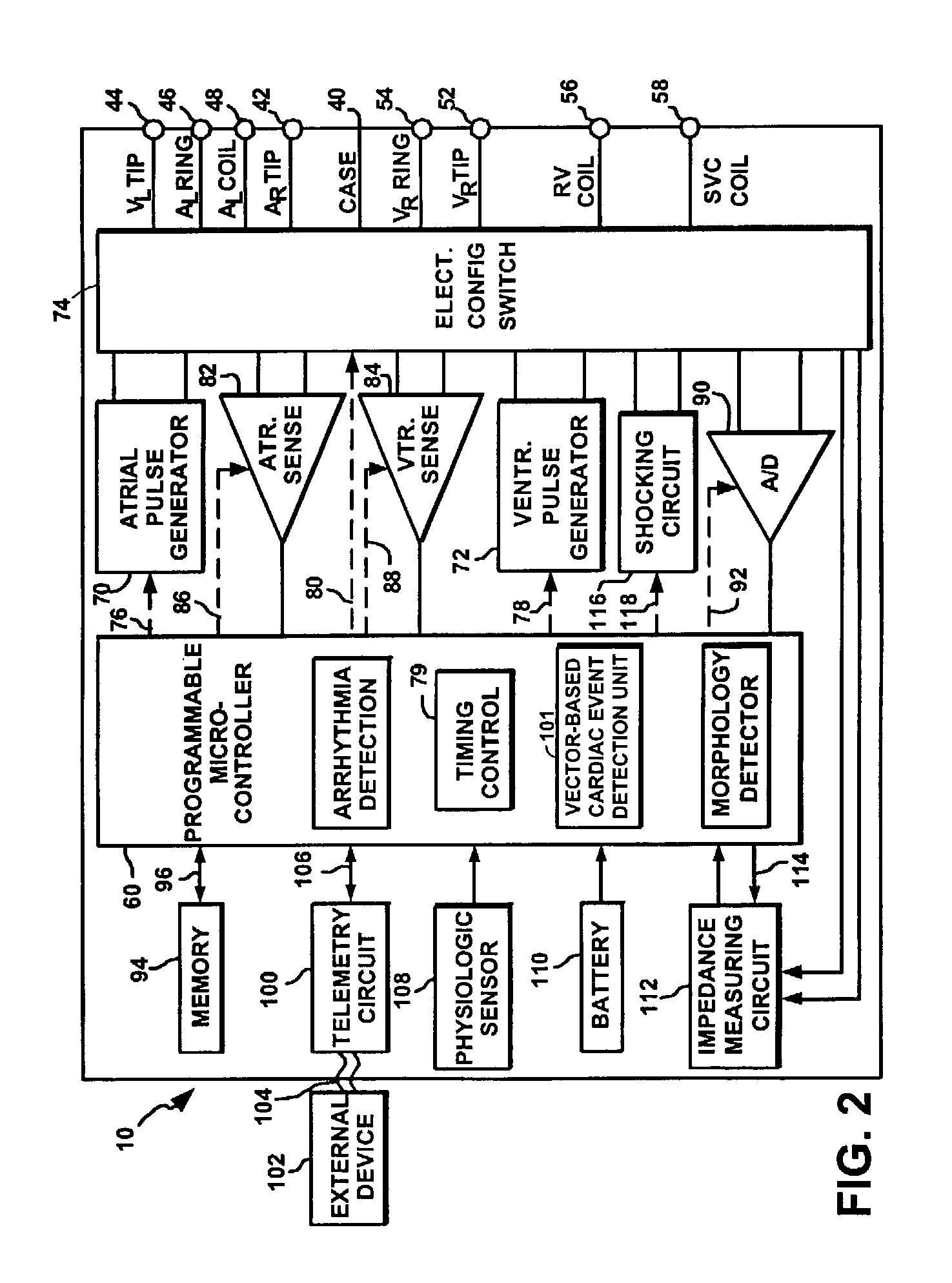Implantable medical device and method for detecting cardiac events without using of refractory or blanking periods
a medical device and implantable technology, applied in the field of implantable medical devices, can solve the problems of device failure to detect a bradycardia, atria subject to a tachyarrhythmia, device performing the function of a pacemaker,
- Summary
- Abstract
- Description
- Claims
- Application Information
AI Technical Summary
Benefits of technology
Problems solved by technology
Method used
Image
Examples
Embodiment Construction
[0031]The following description includes the best mode presently contemplated for practicing the invention. The description is not to be taken in a limiting sense but is made merely for the purpose of describing the general principles of the invention. The scope of the invention should be ascertained with reference to the issued claims. In the description of the invention that follows, like numerals or reference designators will be used to refer to like parts or elements throughout.
[0032]Exemplary systems and methods using signal vectors are described for classifying electrical events, such P-waves, R-waves, etc., sensed within the heart of a patient. The classification method is performed by an implantable cardiac stimulation service subject to programming commands received from an external programmer. Initially, an overview of the implanted device is provided with reference to FIGS. 1 and 2 and an overview of an external programmer used to program the device is then provided with ...
PUM
 Login to View More
Login to View More Abstract
Description
Claims
Application Information
 Login to View More
Login to View More - R&D
- Intellectual Property
- Life Sciences
- Materials
- Tech Scout
- Unparalleled Data Quality
- Higher Quality Content
- 60% Fewer Hallucinations
Browse by: Latest US Patents, China's latest patents, Technical Efficacy Thesaurus, Application Domain, Technology Topic, Popular Technical Reports.
© 2025 PatSnap. All rights reserved.Legal|Privacy policy|Modern Slavery Act Transparency Statement|Sitemap|About US| Contact US: help@patsnap.com



